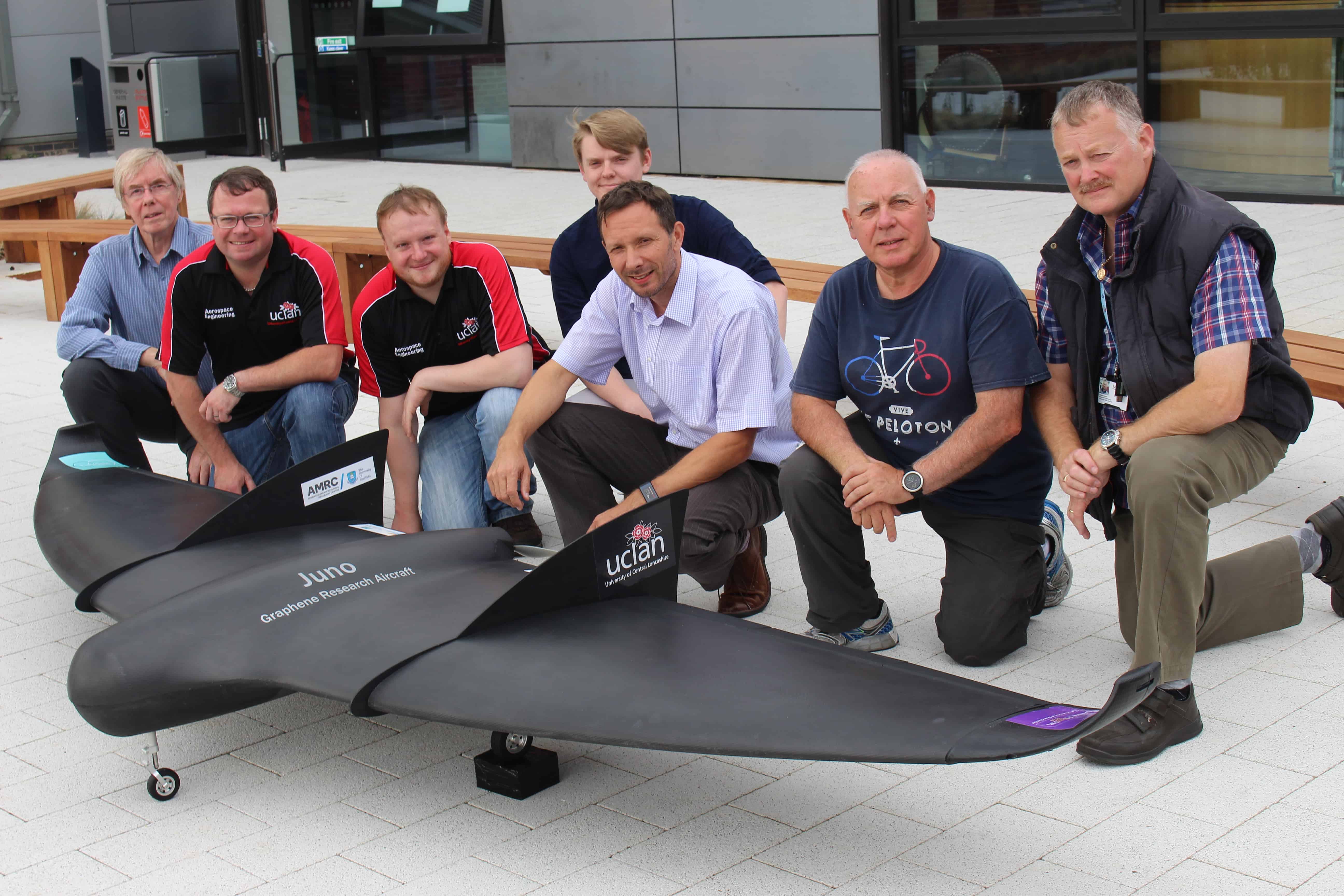
The three-and-a-half-metre wide aircraft was unveiled during this year’s Farnborough International Airshow. Featuring graphene batteries and 3D printed parts, the unmanned aerial vehicle (UAV) was developed in partnership with the Sheffield Advanced Manufacturing Research Centre (AMRC), Haydale Graphene Industries and a range of other businesses.
“The industry reaction to Juno at Farnborough was superb with many positive comments about the work we’re doing,” said Billy Beggs, UCLan’s Engineering Innovation Manager. “Having Juno at one the world’s biggest air shows demonstrates the great strides we’re making in leading a programme to accelerate the uptake of graphene and other nanomaterials into industry.
“The programme supports the objectives of the UK Industrial Strategy and the university’s Engineering Innovation Centre (EIC) to increase industry-relevant research and applications linked to key local specialisms. Given that Lancashire represents the fourth largest aerospace cluster in the world, there is perhaps no better place to be developing next-generation technologies for the UK aerospace industry.”
Previous graphene developments at UCLan have included the world’s first flight of a graphene skinned wing and the launch of a specially designed graphene-enhanced capsule into near space using high altitude balloons. Engineering students at the university have been directly involved in the hands-on project, helping build Juno on the Preston Campus. Much of the material for the build, along with all of the graphene, was supplied by Haydale, a UK-headquartered business that specialises in graphene, silicon carbide and other nanomaterials.
“We are delighted to be part of the project team,” said Ray Gibbs, Haydale CEO. “Juno has highlighted the capability and benefit of using graphene to meet key issues faced by the market, such as reducing weight to increase range and payload, defeating lightning strike and protecting aircraft skins against ice build-up.”




Report highlights significant impact of manufacturing on UK economy
Note to Evil Villain/Dave 2020. Thatcher was PM for _11_ years, from 1979 to 1990 so no one under the age of 34 was even born when she left office....